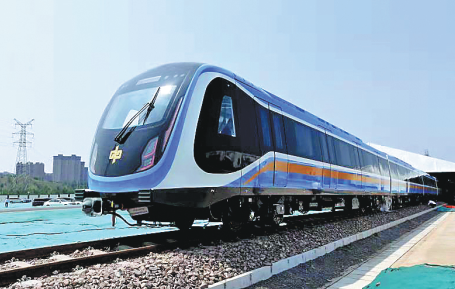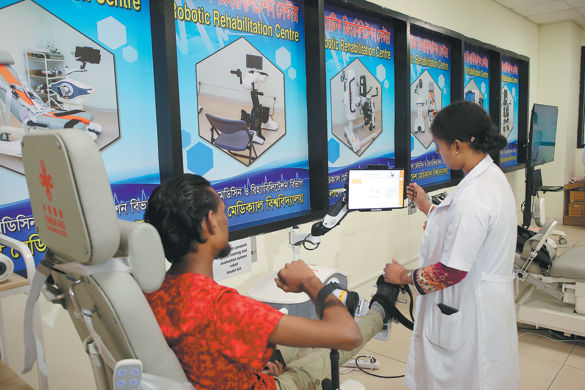First 'China standard' automated subway train ready to roll
By SHI BAOYIN in Zhengzhou and XIN WEN | CHINA DAILY | Updated: 2021-07-15 09:27

The country's first standardized subway train, capable of traveling at up to 120 kilometers per hour, will soon be put into use in Zhengzhou, capital of Henan province.
As a grade-of-automation 4 system, the train is fully automated and will not require operating members. China Railway Rolling Stock Corp, the manufacturing company, said that it will run on a 33.4-km stretch linking Zhengzhou Airport and neighboring Xuchang city to the south. Every part of the train was developed in-house according to a standardized system, and the first model was completed on June 28.
The CRRC plans to manufacture all future subway trains to the same standard, which has been dubbed the "China standard".
Since July 2019, the company has been collaborating with transport associations, subway companies, and scientific research institutions to create a standardized subway design that meets China's advanced technology needs, and to improve modularization of the country's subway trains. The train will shorten travel between Zhengzhou Airport and Xuchang to roughly an hour, facilitating travel to and from the airport.
Lyu Xiaojun, head of CRRC's China standard subway train development and test project team, said that the newly assembled vehicle is made of aluminum alloys.
The train will have four to six carriages, and will be up to 80.24 meters long with a width of 2.89 meters. When full, it will have a capacity of 1, 358 passengers.
Lyu said that compared with other subway trains-which are manufactured according to different standards by different companies-CRRC's China standard trains are uniform, and all key components were researched and manufactured by Chinese engineers.
The design of the new train's parts has been simplified to make it possible for them to be swapped out with used parts in trains made by other manufacturers.
"This cuts down on the number of spare parts the operators need, significantly reducing both operation and maintenance costs," said Lyu, adding that train's 250 components are modular in design.
"Modularization makes subway construction a bit like building using blocks, and shortens the research and development period, enabling a quick response to needs."
Intelligent and efficient interaction techniques on the train offer superior performance for travelers, and noise-canceling features have been optimized to reduce carriage noise by two to three decibels. The train also makes use of new energy-efficient technology, saving around 10 percent on electricity consumption.
"Apart from essential components, we have listed around 40 items that operating companies can choose to include or not," Lyu said. "For example, hearing aids for the disabled and wireless charging equipment are both optional, depending on operator preference."
The train took about a year and a half to assemble and is expected to enter operation at the end of next year.
Song Minhua, vice-chairman of the China Association of Metros, said that standardization and modularization of the urban rail transit technology will help solve the problems and shortcomings the industry has encountered as it develops.
"It puts more emphasis on quality and efficiency, which could further enhance the safety, stability, and competitiveness of our country's urban rail transit system," he said.
Zhengzhou's vice-mayor Wu Fumin said that as an important railway transit hub in China's hinterland, the city will continue to improve the circulation of goods and services between home and abroad by building intercity transportation corridors and creating a metropolitan commuter transport network, with rail transit as the backbone.























